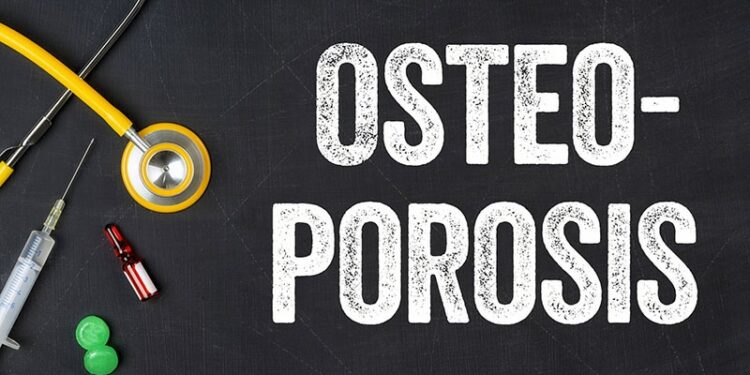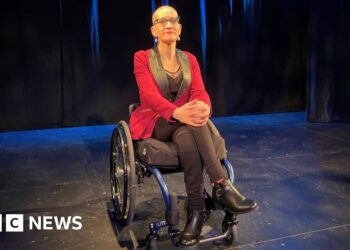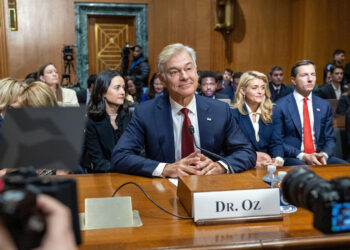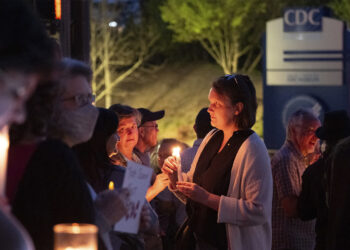Earlier this month, the US Preventive Services Task Force (USPSTF) released updated screening recommendations for osteoporosis. The task force reaffirmed their 2018 recommendations that all women aged 65 years or older and postmenopausal women younger than 65 years at increased risk for osteoporotic fracture should be screened. Notably, there were no recommendations around screening men.
“Due to a lack of available data, the USPSTF concludes that the evidence is insufficient, and the balance of benefits and harms for screening for osteoporosis to prevent osteoporotic fractures in men cannot be determined,” according to the recommendation statement published on January 14, 2025. Importantly, they emphasized that this should not be interpreted as a recommendation against screening men, but rather that there is a lack of evidence, and more research is needed.
“[It’s] unfortunate, frankly, that this same position is held year after year after year because it is a barrier to disease identification,” said Dolores Shoback, MD, an endocrinologist in San Francisco.
“We screen cholesterol to help prevent heart attacks, we screen blood pressure to prevent strokes, but we don’t screen bone density in men in order to help prevent fractures,” she added. “I think that’s a nagging gap.”
Although osteoporosis is more common in women, it affects an estimated two million men in the United States. Men generally experience an increased fracture risk about 10 years later than women but have a higher risk for complications and death after these events. Men are about twice as likely to die as women after a hip fracture; one analysis found that 37% of male hip fracture patients died within 1 year. Yet men are often forgotten in osteoporosis screening.
“It’s a population that never gets looked at until they have a hip fracture,” Shoback said.
Research Gap
The reason men are seemingly overlooked in these recommendations comes down to a lack of research. Similar to how heart disease research historically has included more men than women, osteoporosis research has predominantly focused on women.
“It’s hard to do studies in men because fractures occur less commonly in men than women,” said Robert Adler, MD, chief of Endocrinology and Metabolism at the Richmond Veterans Affairs Medical Center in Richmond, Virginia.
A large, randomized trial in the United Kingdom that tested the feasibility and effectiveness of community-based osteoporosis screening included over 12,000 women aged 70-85 years. A similar trial in men would “likely require forty- to fifty-thousand men,” wrote Adler and co-author Radhika Narla, MD, of the Division of Endocrinology, Metabolism, and Nutrition, Veterans Affairs Puget Sound Health Care System in Seattle, in a recent viewpoint in Osteoporosis International. A trial of that magnitude would be “prohibitively expensive,” they wrote.
However, the USPSTF seeks that caliber of evidence when making their recommendations, said Eric Orwoll, MD, professor of medicine in the Division of Endocrinology, Diabetes, and Clinical Nutrition at Oregon Health & Science University in Portland, Oregon.
“There aren’t randomized controlled trials of the benefits and harms of screening in men, so [USPSTF] can’t offer a recommendation,” he said. However, that strict stance ignores convincing evidence from observational studies on the burden of osteoporosis in men and the benefits of identifying and treating the condition, he added.
Observational Studies and Expert Opinion
One observational study co-authored by Orwoll that included more than 270,000 women and men aged 65 years or older suggested that osteoporosis treatment reduced hip fracture risk similarly in both sexes. A systematic review and meta-analysis of 21 randomized controlled trials in men found that osteoporotic treatment, including bisphosphonates, denosumab, teriparatide, and abaloparatide, improved bone mineral density and was associated with lower fracture rates.
Several professional societies already recommend universal screening for men older than 70 years, including the Endocrine Society and the Bone Health and Osteoporosis Foundation, but these recommendations are “not based on data but rather expert opinion,” Adler noted.
And while observational studies have shown that treatment is effective in older men, evidence is limited that a universal screening approach would be beneficial. A study following more than 543,000 men aged 65-99 years who received primary care through the Veterans Health Administration found that overall, dual-energy x-ray absorptiometry testing was not associated with a decrease in fracture. However, screening with dual-energy x-ray absorptiometry did reduce fracture risk in certain groups, including men on chronic glucocorticoid therapy, men on androgen deprivation therapy, and men aged 80 years or older.
Universal vs Targeted Screening
Both Adler and Orwoll emphasized that the USPSTF recommendations applied only to widespread screening of older men and not those with underlying medical conditions or taking medications associated with bone loss.
The USPSTF “says we don’t have data to give an age for doing [universal screening] in men, but that doesn’t mean that certain men should not be targeted for evaluation because of various medical conditions,” Adler said.
A fracture after 50 years, long-term glucocorticoid use, androgen deprivation therapy, hypogonadism, and excess alcohol use can all increase the risk for fracture in men. Chronic conditions like diabetes, rheumatoid arthritis, celiac disease, and weight loss surgery are also indications for evaluation. (A more comprehensive list of known risk factors for osteoporosis and evaluation recommendations can be found here.)
Guidelines generally recommend screening men younger than 65-70 years who have known risk factors, Orwoll noted. “Usually, men aged 50 or above with risk factors are recommended for screening, but I would suggest screening should be considered for any adult with significant risk factors,” he added.
Ultimately, the decision “comes to down to clinical judgment,” Shoback said, but screening based on known risk factors is “reasonable.”
“Screen once — if there is nothing wrong, more ‘screening’ is not needed,” she said.
Adler, Orwoll, and Shoback had no relevant disclosures.
Source link : https://www.medscape.com/viewarticle/nagging-gap-screening-men-osteoporosis-2025a10001t2?src=rss
Author :
Publish date : 2025-01-24 11:32:26
Copyright for syndicated content belongs to the linked Source.














